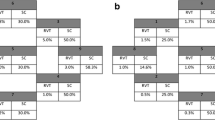Abstract
The usage of downscaling technology for producing nanosuspensions/nanocrystals can be beneficial for formulation development, which has attracted increased attention recently. An ultra-small bead milling method (5 mg compound per batch, smallest scale to date) was tested to produce nanocrystals of four poorly soluble plant compounds, i.e., quercetin, rutin, resveratrol, and hesperidin. A particle size of ranged from 200 to 500 nm was obtained for nanosuspensions of four compounds and the stabilizer selection could be achieved within 2 h by using this ultra-small bead milling method. Six months stability was observed for selected samples. In addition, the scalability of the ultra-small lab-scale milling was confirmed when it was conducted under optimal conditions. A simple and fast ultra-small-scale approach for nanosuspension production was established. Freeze-drying was applied to convert nanosuspensions into solid forms. Finally, freeze-dried intermediates with good redispersity and physical stability were obtained, which could be used for further application.







Similar content being viewed by others
References
Liu T, Muller RH, Moschwitzer JP. Effect of drug physico-chemical properties on the efficiency of top-down process and characterization of nanosuspension. Expert Opin Drug Deliv. 2015;12(11):1741–54. doi:10.1517/17425247.2015.1057566.
Sinha B, Muller RH, Moschwitzer JP. Bottom-up approaches for preparing drug nanocrystals: formulations and factors affecting particle size. Int J Pharm. 2013;453(1):126–41. doi:10.1016/j.ijpharm.2013.01.019.
Rabinow BE. Nanosuspensions in drug delivery. Nat Rev Drug Discov. 2004;3(9):785–96. doi:10.1038/nrd1494.
Merisko-Liversidge E, Liversidge GG. Nanosizing for oral and parenteral drug delivery: a perspective on formulating poorly-water soluble compounds using wet media milling technology. Adv Drug Deliv Rev. 2011;63(6):427–40. doi:10.1016/j.addr.2010.12.007.
Ghosh I, Bose S, Vippagunta R, Harmon F. Nanosuspension for improving the bioavailability of a poorly soluble drug and screening of stabilizing agents to inhibit crystal growth. Int J Pharm. 2011;409(1-2):260–8. doi:10.1016/j.ijpharm.2011.02.051.
Van Eerdenbrugh B, Van den Mooter G, Augustijns P. Top-down production of drug nanocrystals: nanosuspension stabilization, miniaturization and transformation into solid products. Int J Pharm. 2008;364(1):64–75. doi:10.1016/j.ijpharm.2008.07.023.
Liedtke S, Wissing S, Muller RH, Mader K. Influence of high pressure homogenisation equipment on nanodispersions characteristics. Int J Pharm. 2000;196(2):183–5.
Lestari ML, Muller RH, Moschwitzer JP. Systematic screening of different surface modifiers for the production of physically stable nanosuspensions. J Pharm Sci. 2015;104(3):1128–40. doi:10.1002/jps.24266.
Kesisoglou F, Panmai S, Wu Y. Nanosizing--oral formulation development and biopharmaceutical evaluation. Adv Drug Deliv Rev. 2007;59(7):631–44. doi:10.1016/j.addr.2007.05.003.
Jang M, Cai L, Udeani GO, Slowing KV, Thomas CF, Beecher CW, et al. Cancer chemopreventive activity of resveratrol, a natural product derived from grapes. Science. 1997;275(5297):218–20.
Lin JP, Yang JS, Lin JJ, Lai KC, Lu HF, Ma CY, et al. Rutin inhibits human leukemia tumor growth in a murine xenograft model in vivo. Environ Toxicol. 2012;27(8):480–4. doi:10.1002/tox.20662.
Murakami A, Ashida H, Terao J. Multitargeted cancer prevention by quercetin. Cancer Lett. 2008;269(2):315–25. doi:10.1016/j.canlet.2008.03.046.
Etcheverry SB, Ferrer EG, Naso L, Rivadeneira J, Salinas V, Williams PA. Antioxidant effects of the VO(IV) hesperidin complex and its role in cancer chemoprevention. J Biol Inorg Chem. 2008;13(3):435–47. doi:10.1007/s00775-007-0332-9.
Liu T, Muller RH, Moschwitzer JP. Systematical investigation of a combinative particle size reduction technology for production of resveratrol nanosuspensions. AAPS PharmSciTech. 2016. doi:10.1208/s12249-016-0612-1.
Mauludin R, Muller RH, Keck CM. Development of an oral rutin nanocrystal formulation. Int J Pharm. 2009;370(1-2):202–9. doi:10.1016/j.ijpharm.2008.11.029.
Romero GB, Chen R, Keck CM, Muller RH. Industrial concentrates of dermal hesperidin smartCrystals(R)—production, characterization & long-term stability. Int J Pharm. 2015;482(1-2):54–60. doi:10.1016/j.ijpharm.2014.11.039.
Sahoo NG, Kakran M, Shaal LA, Li L, Muller RH, Pal M, et al. Preparation and characterization of quercetin nanocrystals. J Pharm Sci. 2011;100(6):2379–90. doi:10.1002/jps.22446.
Hao J, Gao Y, Zhao J, Zhang J, Li Q, Zhao Z, et al. Preparation and optimization of resveratrol nanosuspensions by antisolvent precipitation using Box-Behnken design. AAPS PharmSciTech. 2015;16(1):118–28. doi:10.1208/s12249-014-0211-y.
Lee MK, Kim MY, Kim S, Lee J. Cryoprotectants for freeze drying of drug nano-suspensions: effect of freezing rate. J Pharm Sci. 2009;98(12):4808–17. doi:10.1002/jps.21786.
Gao L, Zhang D, Chen M, Duan C, Dai W, Jia L, et al. Studies on pharmacokinetics and tissue distribution of oridonin nanosuspensions. Int J Pharm. 2008;355(1-2):321–7. doi:10.1016/j.ijpharm.2007.12.016.
Lee J, Cheng Y. Critical freezing rate in freeze drying nanocrystal dispersions. J Control Release. 2006;111(1-2):185–92. doi:10.1016/j.jconrel.2005.12.003.
Van Eerdenbrugh B, Vermant J, Martens JA, Froyen L, Van Humbeeck J, Augustijns P, et al. A screening study of surface stabilization during the production of drug nanocrystals. J Pharm Sci. 2009;98(6):2091–103. doi:10.1002/jps.21563.
Moschwitzer JP. Drug nanocrystals in the commercial pharmaceutical development process. Int J Pharm. 2013;453(1):142–56. doi:10.1016/j.ijpharm.2012.09.034.
Merisko-Liversidge E, Liversidge GG, Cooper ER. Nanosizing: a formulation approach for poorly-water-soluble compounds. Eur J Pharm Sci. 2003;18(2):113–20.
Ain-Ai A, Gupta PK. Effect of arginine hydrochloride and hydroxypropyl cellulose as stabilizers on the physical stability of high drug loading nanosuspensions of a poorly soluble compound. Int J Pharm. 2008;351(1-2):282–8. doi:10.1016/j.ijpharm.2007.09.029.
Van Eerdenbrugh B, Froyen L, Van Humbeeck J, Martens JA, Augustijns P, Van den Mooter G. Drying of crystalline drug nanosuspensions-the importance of surface hydrophobicity on dissolution behavior upon redispersion. Eur J Pharm Sci. 2008;35(1-2):127–35. doi:10.1016/j.ejps.2008.06.009.
Keck CM. Particle size analysis of nanocrystals: improved analysis method. Int J Pharm. 2010;390(1):3–12. doi:10.1016/j.ijpharm.2009.08.042.
Abdelwahed W, Degobert G, Stainmesse S, Fessi H. Freeze-drying of nanoparticles: formulation, process and storage considerations. Adv Drug Deliv Rev. 2006;58(15):1688–713. doi:10.1016/j.addr.2006.09.017.
Salazar J, Muller RH, Moschwitzer JP. Performance comparison of two novel combinative particle-size-reduction technologies. J Pharm Sci. 2013;102(5):1636–49. doi:10.1002/jps.23475.
Kayaert P, Van den Mooter G. Is the amorphous fraction of a dried nanosuspension caused by milling or by drying? A case study with Naproxen and Cinnarizine. Eur J Pharm Biopharm. 2012;81(3):650–6.
Acknowledgements
We are grateful for financial support from the Shandong Provincial Natural Science Foundation, China (No. ZR2014HP023).
Author information
Authors and Affiliations
Corresponding author
Rights and permissions
About this article
Cite this article
Liu, T., Yao, G., Liu, X. et al. Preparation Nanocrystals of Poorly Soluble Plant Compounds Using an Ultra-Small-Scale Approach. AAPS PharmSciTech 18, 2610–2617 (2017). https://doi.org/10.1208/s12249-017-0742-0
Received:
Accepted:
Published:
Issue Date:
DOI: https://doi.org/10.1208/s12249-017-0742-0




